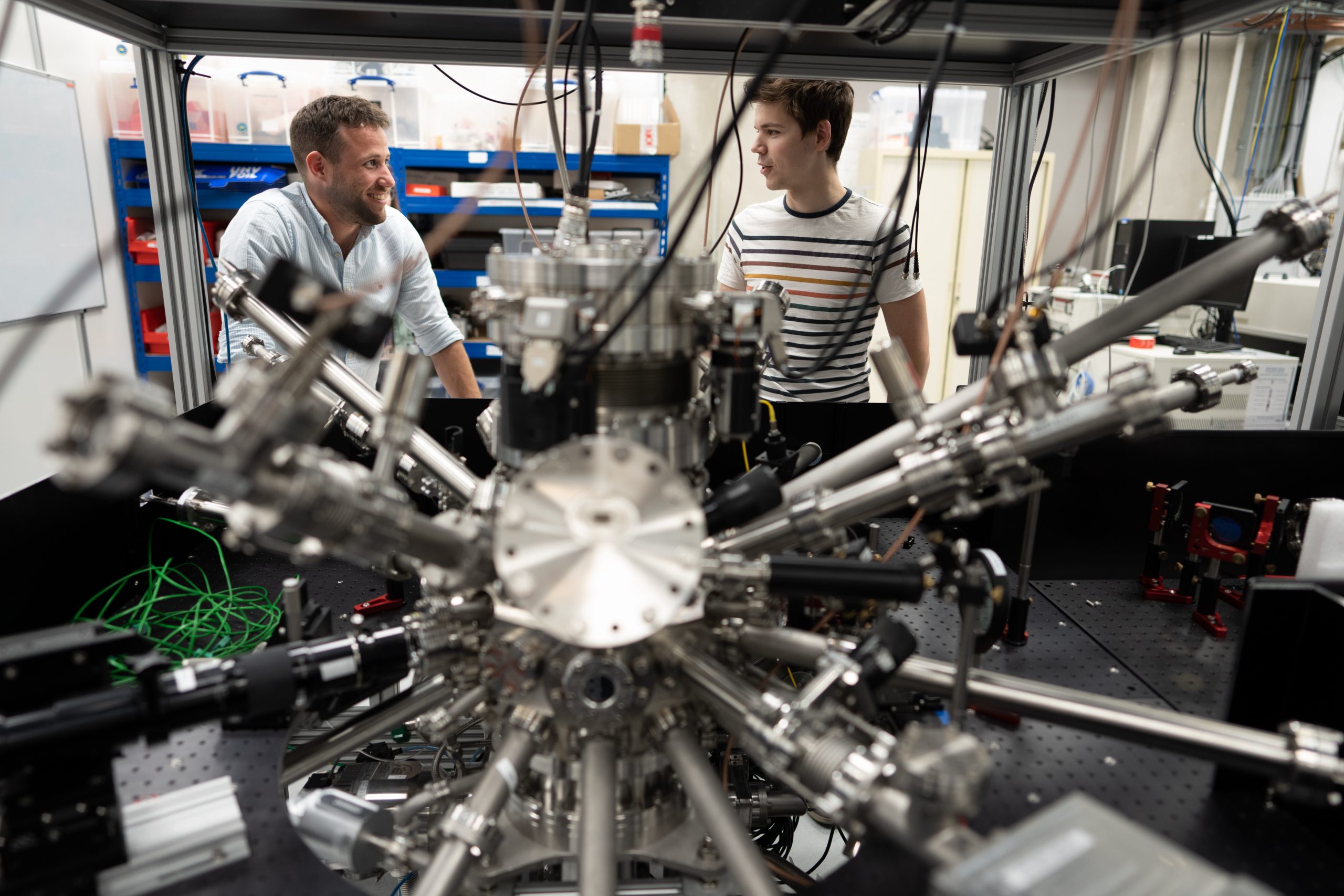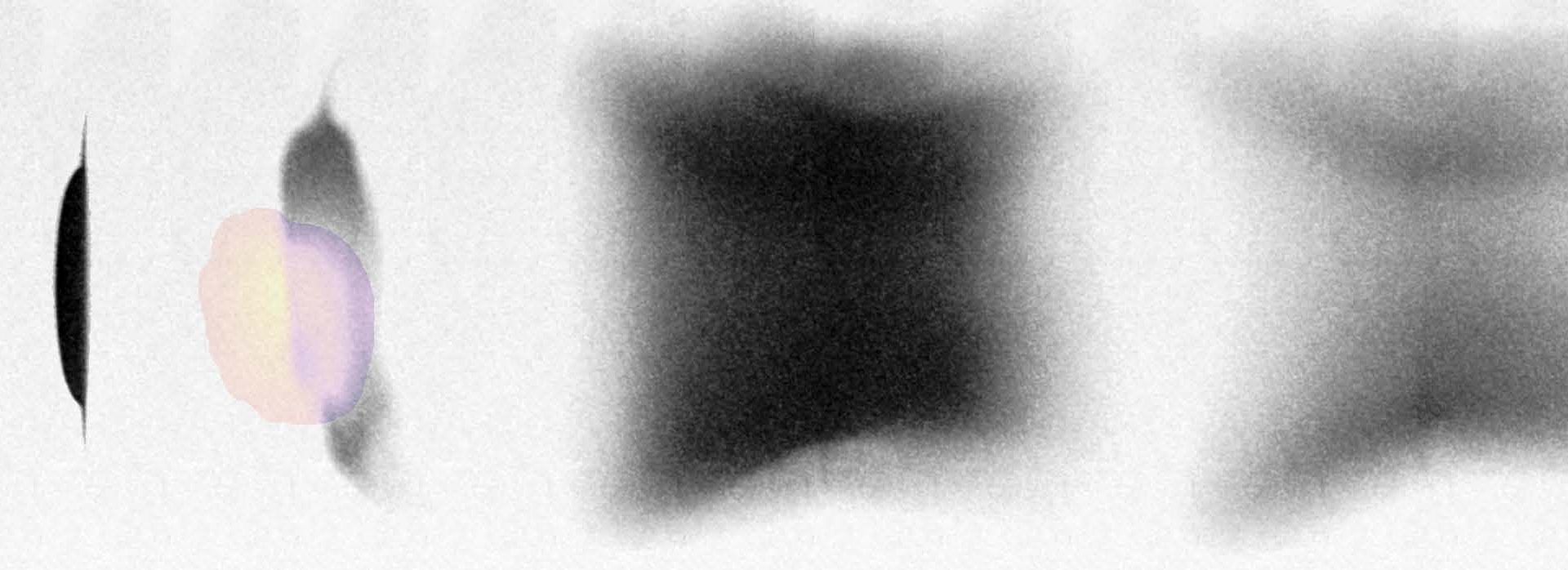How to vaporize a pancake: laser intensity key to tin vaporization
Research on extreme ultraviolet light (EUV) sources is key to developing nanolithography machines to make ever smaller computer chips. Inspired by even stronger sources of EUV light, scientists are exploring the possibility of using vaporized tin. New results from researchers at ARCNL and Vrije Universiteit Amsterdam (VU), published in Physical Review Research, show that the key to controlling the vapor production process is the intensity of the vaporizing laser pulse.
Tin pancakes and vaporization
Not found naturally anywhere on Earth, EUV light is produced using liquified tin droplets and two extremely short, high-intensity laser pulses. This works by focusing the laser pulses on the droplets, which absorb the laser energy. The first pulse flattens the droplets into flat pancakes of liquid tin. The second, stronger pulse is so intense that the tin becomes plasma, and all the energy absorbed from both pulses is released in the form of EUV light.
A lot of EUV light is needed in making computer chips, so researchers are working on higher-yield EUV processes. Inspired by the goals of ASML, researchers in Oscar Versolato’s group at ARCNL are exploring tin vapor as a source of EUV light. A vapor could absorb the final laser pulse more efficiently than the liquid pancake, thus giving more light.
Like water vapor in a shower, tin vapor is a mix of tin gas and liquid droplets, or nanoparticles. But unlike water vapor, tin vapor temperatures are more than 2500 degrees Celsius! To make the tin vapor, an extra laser pulse is needed after the first, vaporizing the tin pancake. This vaporizing laser pulse is only a billionth of a second long, but millions of times more intense than the heat of your stovetop!
What is the optimal vapor?
Tin vapor can come in many shapes and sizes, and its properties can affect EUV light production. Vapor can have different temperatures, different shapes, and different amounts of nanoparticles. The process of making the vapor also has many things you could change, like the vaporization laser pulse intensity or pulse length, or the pancake that the vapor comes from. For making EUV light, what is the optimal vapor, and what knobs can you turn to get it?

PhD researcher Dion Engels focuses on this vaporization process. “There’re many things you can change, practically infinite. So, I did nearly all of them!” After painstakingly testing the variables in vapor production, Dion concluded that there was really only one knob to turn.
Dion found that changing the intensity of the vaporization laser pulse had a strong effect on the vapor that came out. Testing a wide range of intensities, he saw that at the lower intensities (which are still 1 million watts per square cm, or a few thousand stovetops), the vaporization process was very smooth and even. “I tell my grandma that it’s like when water evaporates from a puddle outside, but extremely quickly,” shares Dion.
Above a certain laser intensity, however, some tin plasma forms as well. This changes the shape of the final cloud of vapor by burning it up. The final vapor has no nanoparticles, becoming a pure tin gas, and the temperature of the vapor increases from more than 2500 to 8000 degrees Celsius!
While further research is needed to determine the optimal vapor for EUV light production, now we know that you really only need to find the right laser intensity.
How to study vapor using 650 colors
To study the tin vaporization process, Dion used 650 different wavelengths, or “colors,” of ultraviolet light and looked at how the vapor reacted with each of them. This technique is called spectroscopy. By using many colors, you can get more information about the composition of vapor. You can think of it like looking through the lenses of 3D glasses: you see different things through the red lens than through the blue lens.

By taking the images from each wavelength and layering them together, Dion could make complete images of the vaporization process at every step: from droplet, to pancake, to vaporization (with possible plasma), to final vapor. These images showed the effect of laser pulse intensity on the tin vaporization process.
The tin vapor parameter
The results are published in the journal Physical Review Research. “This is the parameter to use to change the vapor,” says Dion, “which makes vaporizing tin more practical.”
To read more about tin vapor, plasma and spectroscopy, check out the paper here: Spectroscopic imaging of tin vapor near plasma threshold | Phys. Rev. Research








